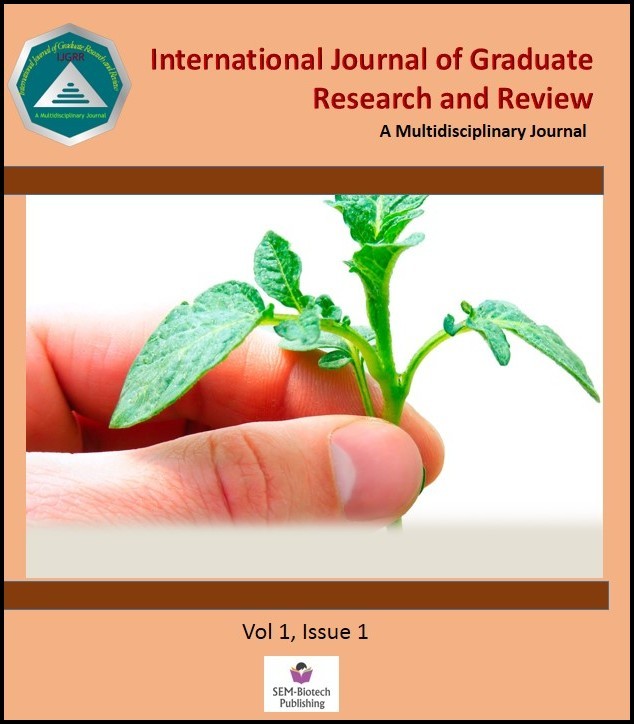





Anthelmintic Activities of Various Botanicals Used Against Gastrointestinal Helminth of Goat and Sheep
Pratik Gautam*, Krishna Kaphle2
1Paklihawa Campus, Institute of Agriculture and Animal Science, Tribhuvan University, Siddarthangar-1, Rupandehi, Nepal
2Department of Theriogenology, Paklihawa Campus, Institute of Agriculture and Animal Science, Tribhuvan University, Siddarthanagar-1, Rupandehi, Nepal
Pratik Gautam*, Krishna Kaphle2
1Paklihawa Campus, Institute of Agriculture and Animal Science, Tribhuvan University, Siddarthangar-1, Rupandehi, Nepal
2Department of Theriogenology, Paklihawa Campus, Institute of Agriculture and Animal Science, Tribhuvan University, Siddarthanagar-1, Rupandehi, Nepal
Abstract
Small ruminants are considered to be best option in the fight against food insecurity and economic disparity for the marginalized communities in Nepal. Goat (Capra hircus) alone is ruminant with highest population with more than eleven million heads. Of the major challenges, gastrointestinal helminths are major health problem for reducing productivity. Bunostomum, Gnathostoma, Acyclostoma, Ascaris, Haemonchus, Oesophagostomum, Capillaria, Chabertia, Oxyuris, Trichuris, Strongyloides, Trichostrongyloid, Nematodirus, Ostertagia , Dicrocoelium, Capillaria, Paramphistomum, Fasciola, Moniezia and Taenia are reportedly prevalent. Farmers generally use anthelmintic twice in a year as routine deworming. Anthelmintic resistance is increasing due to various factors like under dosing, long term use of same anthelmintic and genetic factors of helminth. To counter anthelmintic resistance in future, alternatives to present drugs is being sought. Various plants like Artemisia sp., Carica papaya, Calotropis procera, Zinziber officinale, Terminalia chebula, Swertia chirayita, Adathoda vesica, Nicotiana tabacum, Chenopodium album, Musa paradisiaca, Tagetes sp., Momordica charantia, Albizia anthelmintica, Cucurbita moschata have been evaluated in in-vivo and in-vitro studies as anthelmintic. In controlled trials some botanical products have shown promising activity. This article reviews efficacy of botanicals on control of gastrointestinal helminths of goat and sheep.
Keywords: gastrointestinal helminths; botanical anthelmintic; Goat; Sheep
Small ruminants are considered to be best option in the fight against food insecurity and economic disparity for the marginalized communities in Nepal. Goat (Capra hircus) alone is ruminant with highest population with more than eleven million heads. Of the major challenges, gastrointestinal helminths are major health problem for reducing productivity. Bunostomum, Gnathostoma, Acyclostoma, Ascaris, Haemonchus, Oesophagostomum, Capillaria, Chabertia, Oxyuris, Trichuris, Strongyloides, Trichostrongyloid, Nematodirus, Ostertagia , Dicrocoelium, Capillaria, Paramphistomum, Fasciola, Moniezia and Taenia are reportedly prevalent. Farmers generally use anthelmintic twice in a year as routine deworming. Anthelmintic resistance is increasing due to various factors like under dosing, long term use of same anthelmintic and genetic factors of helminth. To counter anthelmintic resistance in future, alternatives to present drugs is being sought. Various plants like Artemisia sp., Carica papaya, Calotropis procera, Zinziber officinale, Terminalia chebula, Swertia chirayita, Adathoda vesica, Nicotiana tabacum, Chenopodium album, Musa paradisiaca, Tagetes sp., Momordica charantia, Albizia anthelmintica, Cucurbita moschata have been evaluated in in-vivo and in-vitro studies as anthelmintic. In controlled trials some botanical products have shown promising activity. This article reviews efficacy of botanicals on control of gastrointestinal helminths of goat and sheep.
Keywords: gastrointestinal helminths; botanical anthelmintic; Goat; Sheep
Full text: PDF
Int. J. Grad. Res. Rev.Vol-5, Issue-3: 204-208



